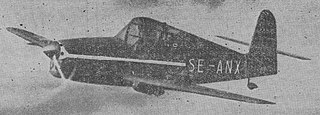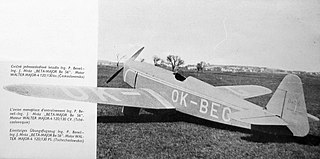
The Pilatus P-3 was a military training aircraft built by Pilatus Aircraft of Switzerland.

The Pacific Aerospace Corporation CT/4 Airtrainer series is an all-metal-construction, single-engine, two-place with side-by-side seating, fully aerobatic, piston-engined, basic training aircraft manufactured in Hamilton, New Zealand.

The PZL 130 Orlik is a Polish turboprop, single engine, two seat trainer aircraft.

The Zlin Z-26 Trener was a tandem-seat basic training aircraft built by the Czechoslovakian company Moravan. A low-wing monoplane of largely wooden construction, it was developed into a series of all-metal trainers. Several were also produced in aerobatic variants, known as the Akrobat.

The Dornier Do 27 is a German single-engine STOL utility aircraft that was designed and manufactured by Dornier GmbH. It was notable for being the first mass-produced aircraft in Germany following the end of the Second World War.

The Bücker Bü 133 Jungmeister is an advanced trainer of the Luftwaffe in the 1930s. It was a single-engine, single-seat biplane of wood and tubular steel construction and covered in fabric.

The Auster J/5 Aiglet Trainer was a 1950s British single-engined four-seat high-wing training and touring monoplane built by Auster Aircraft Limited at Rearsby, Leicestershire.

ENAER T-35 Pillán is a Chilean propeller-driven basic trainer aircraft. The student and the instructor sit in tandem. Production ceased in 1991 after 7 years but restarted briefly in 1998.
The Breda-Pittoni B.P.471 was an Italian twin-engine airliner/military transport produced by Breda.

The Mudry CAP 20 is a French family of aerobatic competition single seater monoplanes.
The Piper PA-6 Sky Sedan was a 1940s American four-seat light aircraft designed and built in prototype form by Piper Aircraft at its Lock Haven, Pennsylvania, factory.

The Piaggio P.148 was a 1950s Italian two-seat primary or aerobatic training monoplane designed and built by Piaggio Aero.

The Pilatus P-4 was a Swiss five-seat cabin monoplane designed and built by Pilatus.The monoplane had little sales success.

The Morane-Saulnier Alcyon is a two or three-seat basic training monoplane designed and built in France by Morane-Saulnier.
The THK-2 was a single-seat, single-engine aerobatic trainer aircraft developed in Turkey in 1944 intended as an advanced trainer. It was a conventional, low-wing cantilever monoplane with an elliptical planform and of wooden construction. The cockpit was enclosed and the main units of the tailwheel undercarriage retracted backwards into the wing.

The Skandinaviska Aero BHT-1 Beauty is a 1940s Swedish single-seat light monoplane designed by E. Bratt, K.E. Hilfing and B.Törnblom and built by Skandinaviska Aero of Stockholm.

The Radab Windex is a family of Swedish high-wing, single-seat aerobatic gliders and motor gliders that was designed by Sven Olof Ridder and produced initially by Radab and later by WindexAir AB as a kit for amateur construction.

The Pilatus P-5 was a single-engined artillery observation aircraft project from Pilatus Aircraft in Switzerland.
The Maestranza Central de Aviación Triciclo-Experimental was a prototype Chilean light aircraft of the 1940s.

The Beneš-Mráz Be-56 Beta-Major was a single-seat aerobatic advanced trainer manufactured in Czechoslovakia shortly before World War II.




















